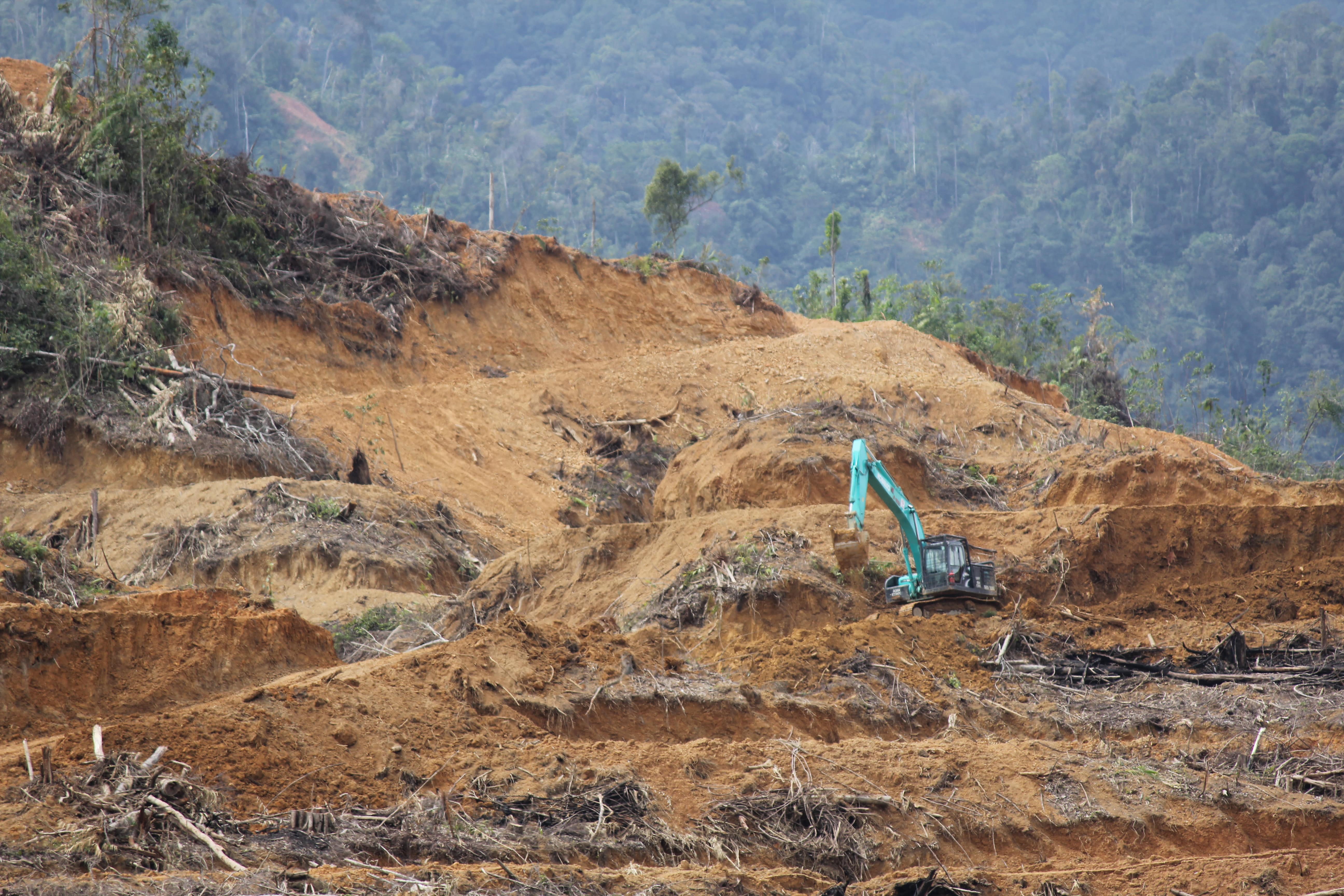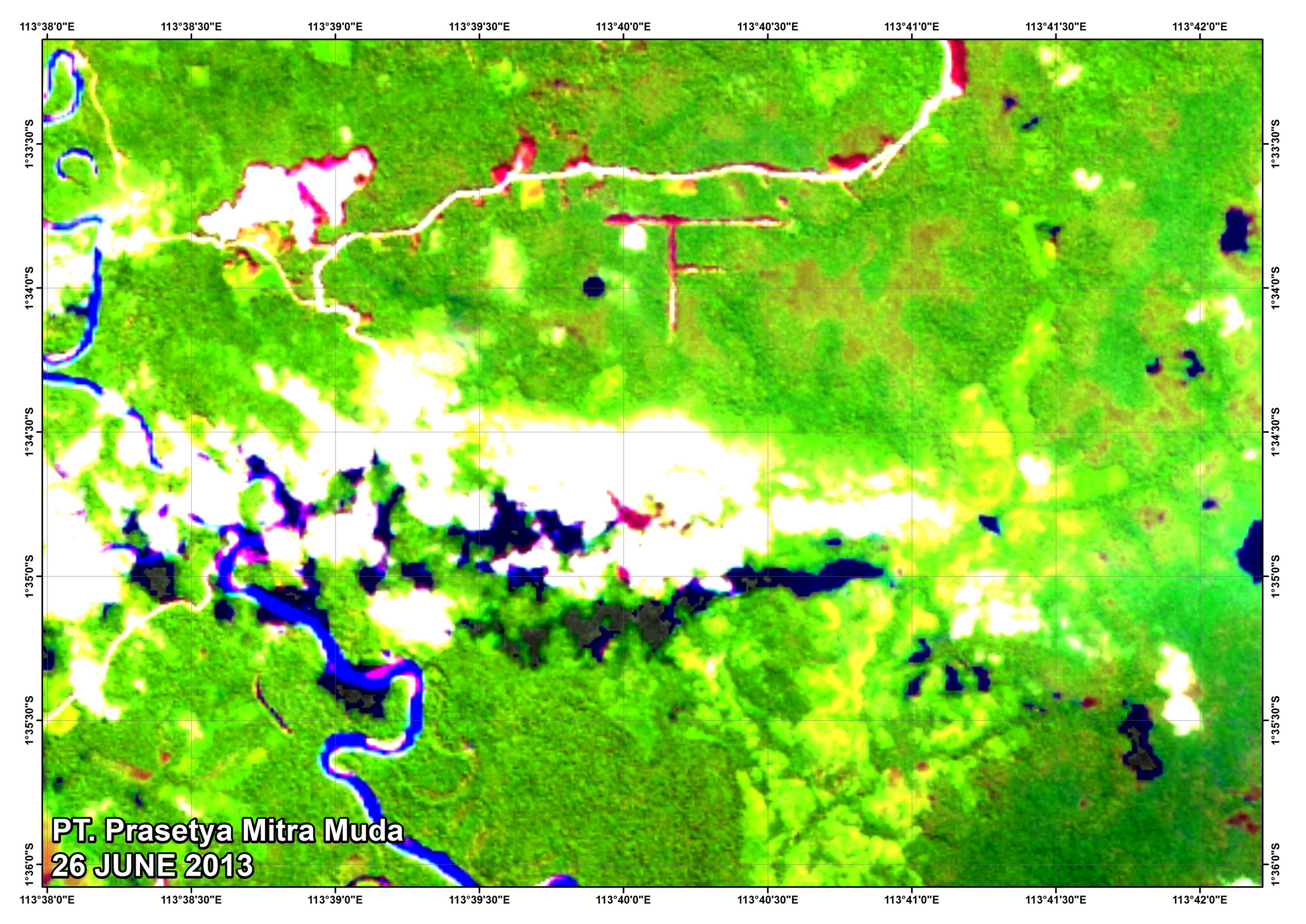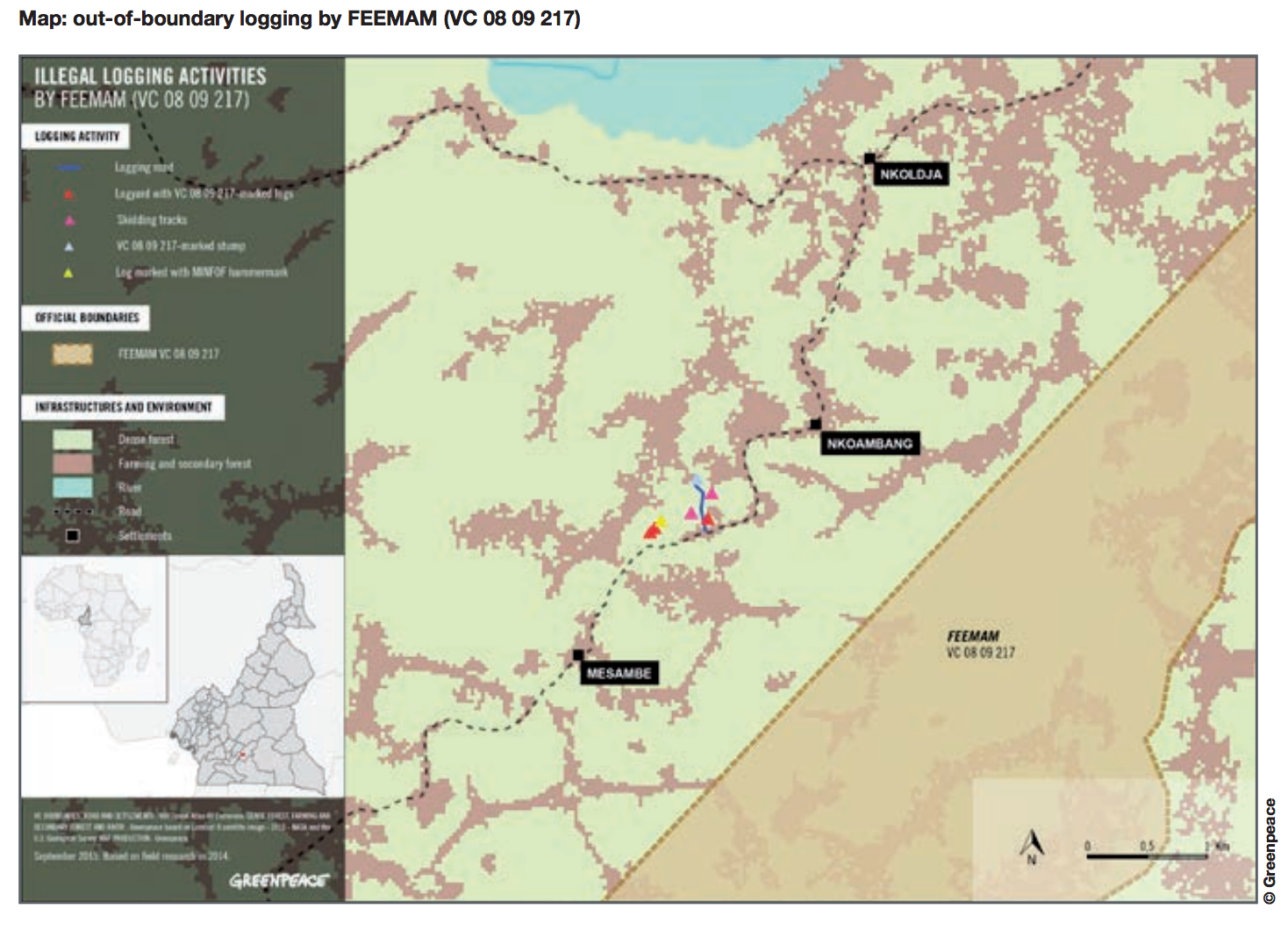Timber Investigation Centre — Case Studies
Over the past two decades a number of NGOs have repeatedly exposed illegal logging and linked the trade to market. The case studies below include highlights from some recent examples. To find out more about the methods used in each case, access the Guidebook
1. The Amazon’s Silent Crisis

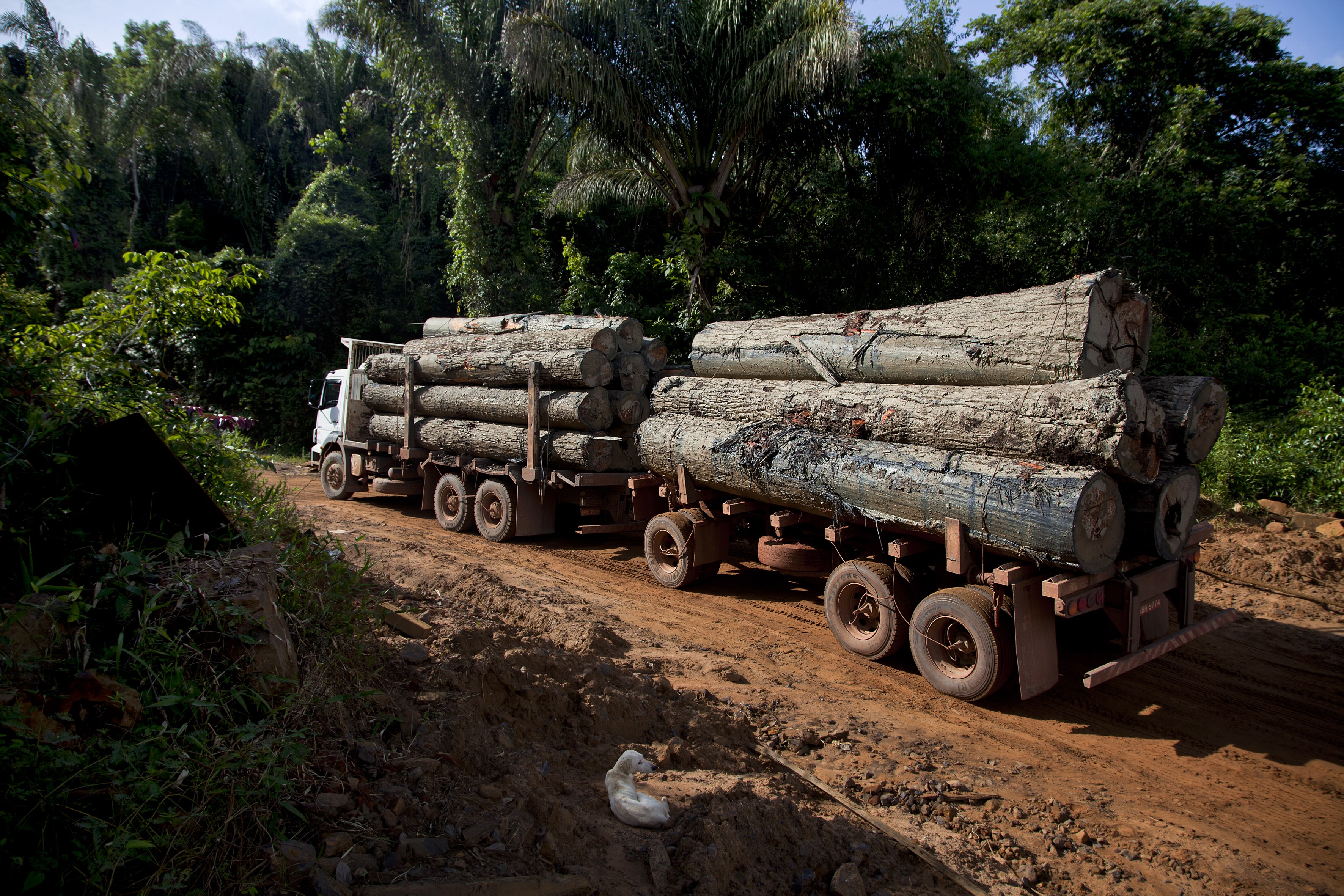 Based on the scale of harvesting and export, Greenpeace
chose to examine the legality of harvesting of the high-value species Ipê in
the state of Pará in Brazil. Existing evidence, including previous government
enforcement cases, suggested that laundering of timber origin was occurring,
abetted by fraudulent documentation.
Based on the scale of harvesting and export, Greenpeace
chose to examine the legality of harvesting of the high-value species Ipê in
the state of Pará in Brazil. Existing evidence, including previous government
enforcement cases, suggested that laundering of timber origin was occurring,
abetted by fraudulent documentation.2. Investigating selective harvesting in Sarawak
In 2009, Norway’s state pension fund commissioned Earthsight to investigate the activities of a large Malaysian logging company in which it owned shares. Earthsight used reference documents, satellite images and fieldwork to expose a range of different types of illegalities by the company in its licensed harvest areas (concessions) in Sarawak:
- Analysis of reference documents: Environmental Impact Assessments for the logging in a number of the concessions stated that the company had begun re-entry logging before the Assessments had been issued, which is a breach of regulations
- Comparing reference documents with satellite images: Detailed concession maps were obtained from the annexes of Environmental Impact Assessments. These were compared with recent satellite imagery, which was post-processed so that vegetation damage from recent selective logging could be clearly seen. Comparison of these two datasets exposed evidence of illegal logging outside concession boundaries and in prohibited areas within concessions.
- Field observations and interviews: Evidence of illegal cutting in river buffers, logging of protected species, pollution of rivers with logging debris and illegal clearance in excess of limits along logging roads was obtained via field observations. Additional evidence of illegal harvesting of protected species, cutting of undersize logs and fraudulent log markings were obtained from interviews with loggers and logging camp employees.
3. Clearing before permits

The report including these findings can be downloaded here [PDF]
4. Combining Field and Map Data

5. Timber smuggling in Indonesia
6. The Peru paper trail

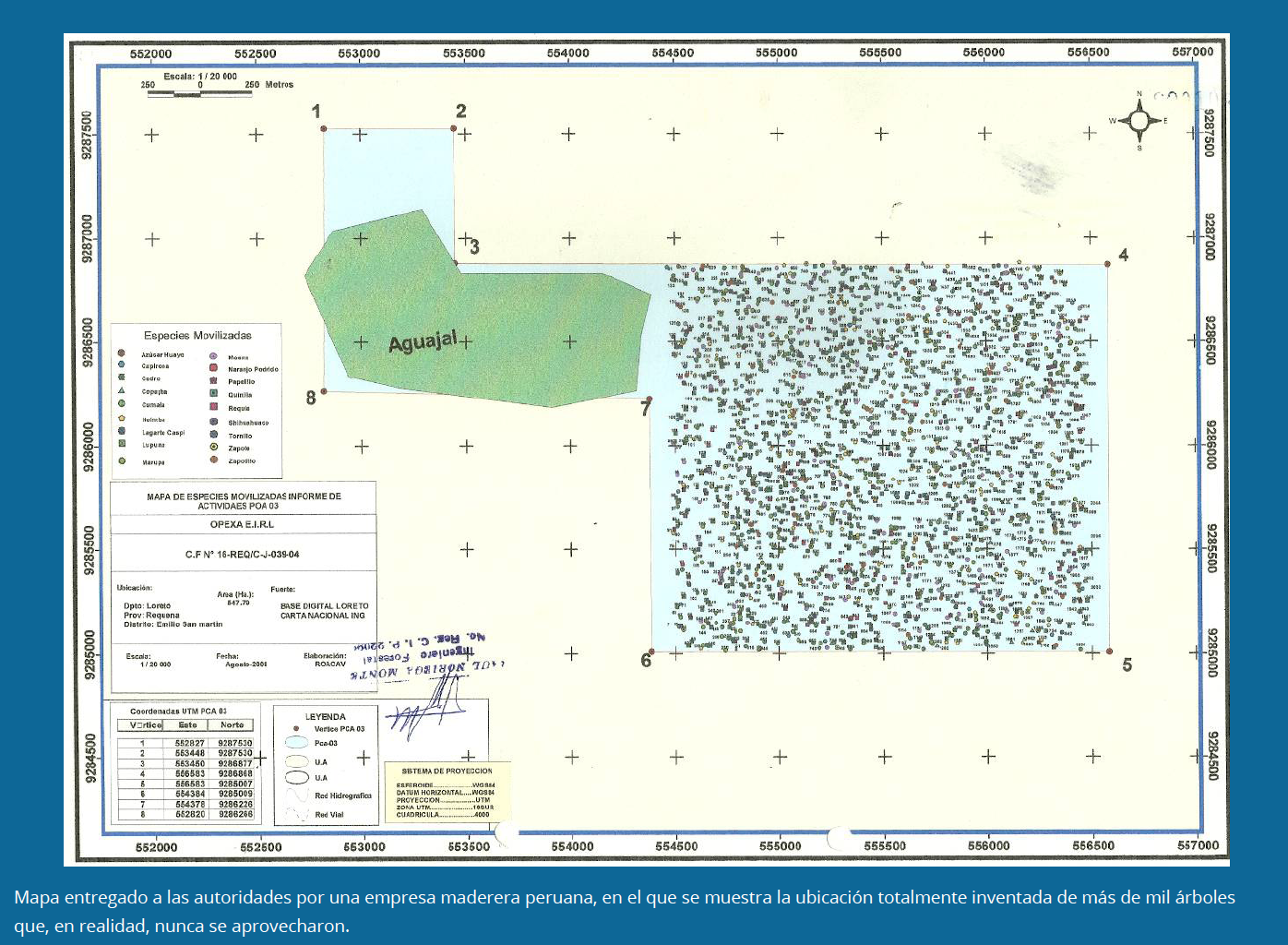 In Peru a state agency, the Supervisory Body for Forest
Resources and Wildlife (OSINFOR) carries out regular, random field inspections
to forest concessions that have recently been logged. During these inspections,
OSINFOR officials assess the extent to which harvesting has taken place in
compliance with regulations. They also assess a sample of forest to check it
against volumes declared by the concessionaire. These inspections produce
Supervisory Reports that identify illegalities such as false inventories,
illegal logging and misuse of permits to launder timber.EIA obtained Supervisory Reports for inspections carried out
between 2008 and 2011 using Peru’s Transparency and Access to Public
Information Law. More than 200 concessions covered by the reports exhibited
some form of serious illegality. EIA cross-referenced these reports with a
database of CITES export permits for cedar and mahogany from Peru, which were
also obtained under the transparency law. This identified more than 100 permits
used to export endangered species to the US, all of which could be directly
connected, through the permits themselves, to concessions where OSINFOR had
identified evidence of serious illegal activities.The CITES permits name the concessions of origin, in theory,
but in some cases they were linked to concessions where OSINFOR had found no
legal logging. In most cases, the concessionaires had falsified inventories to
inflate the volume of endangered species legally available to them. The CITES
permits also named the importers of timber in the US, so using this process EIA
was able to make a clear link between illegal harvest and market.Click here
[PDF] to download the report.
In Peru a state agency, the Supervisory Body for Forest
Resources and Wildlife (OSINFOR) carries out regular, random field inspections
to forest concessions that have recently been logged. During these inspections,
OSINFOR officials assess the extent to which harvesting has taken place in
compliance with regulations. They also assess a sample of forest to check it
against volumes declared by the concessionaire. These inspections produce
Supervisory Reports that identify illegalities such as false inventories,
illegal logging and misuse of permits to launder timber.EIA obtained Supervisory Reports for inspections carried out
between 2008 and 2011 using Peru’s Transparency and Access to Public
Information Law. More than 200 concessions covered by the reports exhibited
some form of serious illegality. EIA cross-referenced these reports with a
database of CITES export permits for cedar and mahogany from Peru, which were
also obtained under the transparency law. This identified more than 100 permits
used to export endangered species to the US, all of which could be directly
connected, through the permits themselves, to concessions where OSINFOR had
identified evidence of serious illegal activities.The CITES permits name the concessions of origin, in theory,
but in some cases they were linked to concessions where OSINFOR had found no
legal logging. In most cases, the concessionaires had falsified inventories to
inflate the volume of endangered species legally available to them. The CITES
permits also named the importers of timber in the US, so using this process EIA
was able to make a clear link between illegal harvest and market.Click here
[PDF] to download the report.
7. Investigating timber exports

 In April 2014 Myanmar enacted a log export ban in an effort
to stem rampant over-extraction of timber in its dwindling forests. The annual
allowable quota in the country has been regularly exceeded due to uncontrolled
harvest and exports, with much being transported directly over its northern
border with China, in spite of a requirement that all exports are routed via
Yangon, in the south.
In April 2014 Myanmar enacted a log export ban in an effort
to stem rampant over-extraction of timber in its dwindling forests. The annual
allowable quota in the country has been regularly exceeded due to uncontrolled
harvest and exports, with much being transported directly over its northern
border with China, in spite of a requirement that all exports are routed via
Yangon, in the south.8. Tracking logs from harvest to export

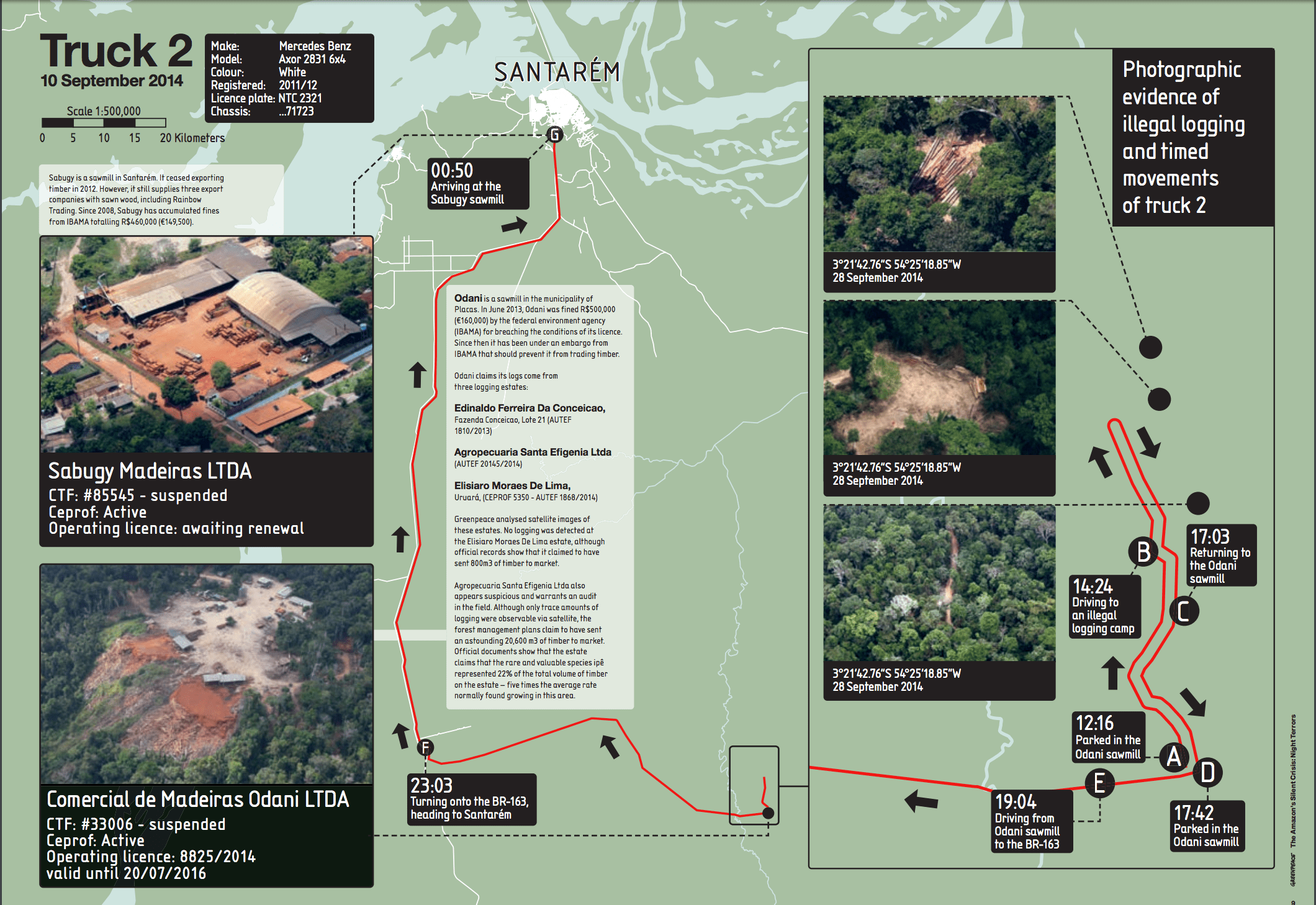 Greenpeace then checked the electronic records for the
sawmills that were receiving the logs, and checked satellite imagery for
evidence of logging in the stated source. They found that in many estates there
was no sign of logging at all, and some only little. They concluded that the
logging estates were being used as a front to provide the sawmills with
paperwork, enabling them to launder illegal timber sourced in the public
forests.
Greenpeace then checked the electronic records for the
sawmills that were receiving the logs, and checked satellite imagery for
evidence of logging in the stated source. They found that in many estates there
was no sign of logging at all, and some only little. They concluded that the
logging estates were being used as a front to provide the sawmills with
paperwork, enabling them to launder illegal timber sourced in the public
forests.9. Investigating trans-continental supply chains
 The Environmental Investigation Agency carried out
interviews with Russian authorities, non-profits and communities, and
determined that systemic illegal logging in the Russian Far East (RFE), and the
laundering of the timber using falsified permits, was something of an open
secret. EIA analysed Russian, Chinese and US customs records to identify dozens
of Chinese companies exporting hardwood flooring to the US, constructed using
oak from these forests.
The Environmental Investigation Agency carried out
interviews with Russian authorities, non-profits and communities, and
determined that systemic illegal logging in the Russian Far East (RFE), and the
laundering of the timber using falsified permits, was something of an open
secret. EIA analysed Russian, Chinese and US customs records to identify dozens
of Chinese companies exporting hardwood flooring to the US, constructed using
oak from these forests.10. Covert meetings expose corruption
11. Covert calls identify suppliers
Next: Resources

